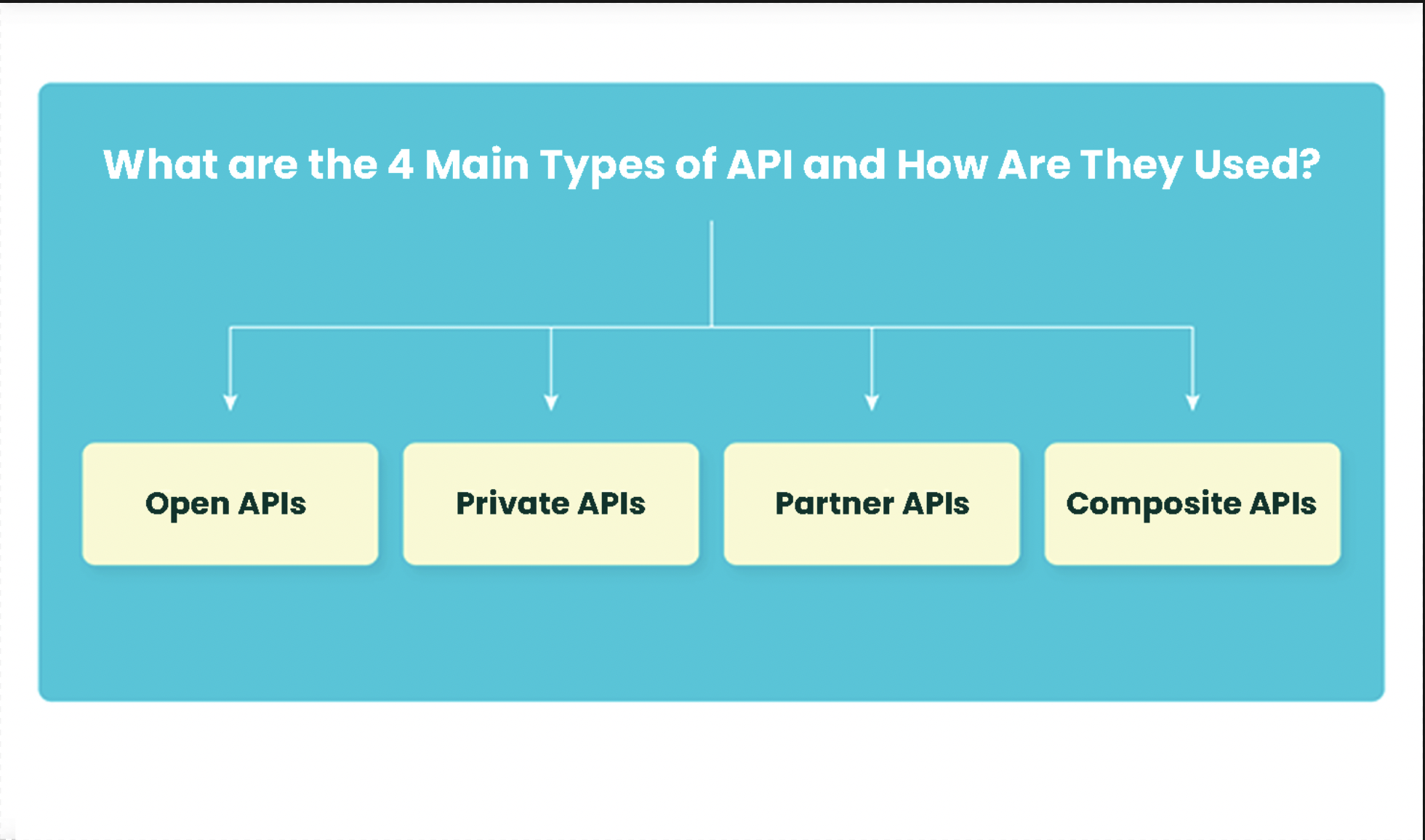Blog
What are the 4 Main Types of API and How Are They Used?
September 27, 2022
Posted by: DevDigital
The digital world basically runs on connections between a wide variety of software and databases that use different languages, communication protocols, and more. When those systems need to share data automatically or when they need to call on another program to perform a function, a piece of code must make the connection. Programmers create the code using application programming interfaces (APIs for short). These connections may be made using different protocols. Regardless of technical details, these programs may be classified according to who can use them or what they do.
API Basics
The term API can refer to a document specifying how to create an interface or the code that implements those instructions, though when people talk about or write about using APIs, they are usually talking about installing and running the code.
While most people refer to APIs according to who has access, they can also be described by the communication protocol they use. The three options are REST, SOAP, and RPC. Representational State Transfer (REST) is what web apps use to share data or invoke processes in response to requests from cloud services. SOAP (Simple Object Access Protocol) is for messaging. Remote Procedural Call (RPC) is for running processes too. All the big retailers and information services (think Google and Amazon) use REST protocols to serve up information in response to web surfers and shoppers.
When a human resources database needs information from a training database, the transfer is accomplished with a few keystrokes. This is clearly much faster and more efficient than running a query against the HR database, downloading the result in spreadsheet format, then adding the data to the training database. An API integration or two can vastly improve the user-friendliness of a website. This will help turn more prospects into customers and more one-time customers into repeat customers. Integrating web-based services via API can produce other benefits as well. Take a look at the four types of API.
1. Public – Connecting Anyone to Applications
A public API is available to anyone who wants to customize software or connect it to something else. Shopping cart and storefront vendor SamCart offers a public API. The Metropolitan Museum of Art also has a public API that allows web developers and app developers to pull content from their site. Microsoft and Apple both have public APIs available so that programmers can create software for Windows and macOS.
These APIs are wildly popular because they allow entrepreneurs and business owners to create software with more capabilities, in less time. Notably, the existence of public APIs has been a boon for mobile app developers. If you have ever logged in to a site with your Google or LinkedIn ID and password, these third-party login options run using an API. However, public APIs can have security vulnerabilities or bugs that need to be fixed..
2. Private - Internal Application Integration
Some APIs are just for internal corporate use. An example would be a program that connects the company’s human resource program to a learning management system. Another example would be a building supply company that helps customers plan their projects and select supplies that the company sells. An API running on the corporate network lets a customer select materials and see prices. Information on pricing and availability, along with images of the items would come from one or two applications outside the project planner app. They tend to be less secure, but they are also meant to mostly run behind a firewall and other enterprise-level security.
3. Partner – Connect with Third Parties
These partner APIs are business-oriented tools that allow affiliates or strategic partners to carry out functions on a software platform like Amazon or Shopify. Amazon’s partner API for businesses is probably the most high-profile example of this approach to application integration. Security tends to be stronger than for private apps and public apps because of the need to restrict who uses that software and what they access. These partner API programs are popular because they give a company another new way to generate business, by sharing information or offering limited access to their own applications.
4. Composite – Streamline Multi-Step Processes
Some processes are just too complicated for one piece of code that connects two pieces of enterprise software. If an action, by a user or computer program, requires two or more processes to run, an API that can combine processes is the answer. A shopping cart application that saves order information to a customer database and accesses a payment processor would use a composite API. A job search website may use a composite API to connect with applicant tracking systems. In general, using a composite API to handle a complex request is faster than having one API handle data and another the process that extracts the data from the source.
Connecting Data and Functions
Application programming interfaces make it possible to create great new services and products without a ton of expensive custom coding. However, some challenges in the business world are well beyond the level where you simply add a piece of code to a website. In those cases, you need to find a development firm with experience using API integrations. Contact DevDigital today.
You might like:
Google Play Developer API How to Manually Generate Access Token
